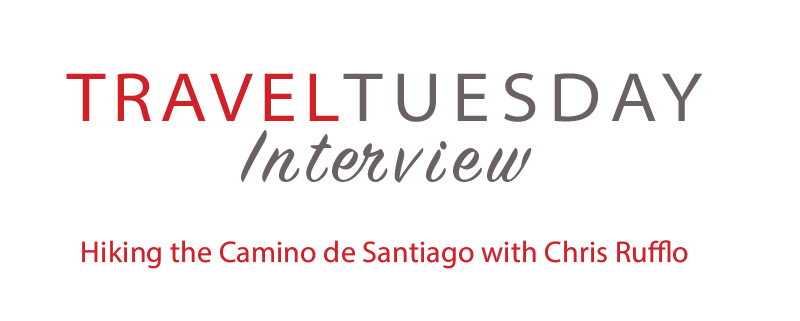
Affiliate links are used in this post. If you make a purchase, I earn a small commission at no cost to you, which goes toward the cost of maintaining this blog.
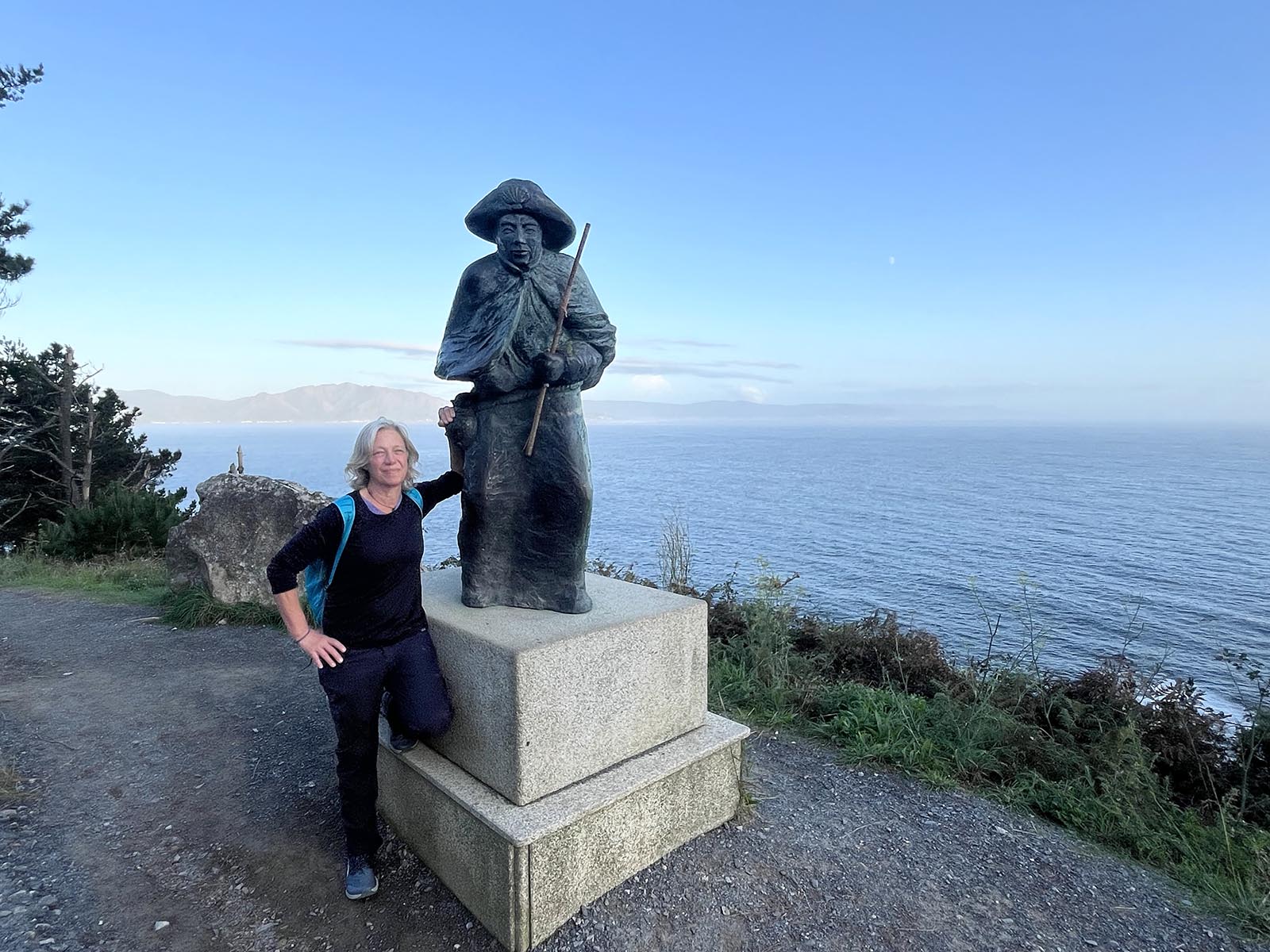
Name: Chris Rufflo
Age: 61
Age: 61
Home Base: Austin, Texas
Country Count: 30
What made you decide to do the Camino de Santiago twice?
That’s a tough one. I mean what compels a person to walk from one side of a country to the other?! I walked the French route in September 2018. I was in a huge transitional time in my life: my sister had recently died from esophageal cancer, which really knocked me off my feet. But there is something about the experience of losing someone close to you that shifts everything…death has a way of clarifying life. I had many tremendous life changes that year and felt the pull of the Camino as a way of clearing my head. Roughly seven years later, I retired [from a career in education] and again feeling the need to reset and clear my head, headed again to the Camino, this time the Portuguese [Sendera Literal Route in September 2024.]
How did you train for the Camino de Santiago? How far in advance should people train?
That depends on how active you are in your day-to-day life and what Camino you are planning to hike. The Portuguese is much easier to walk as there is virtually no altitude gain. The French route, however, does require strength and stamina. You should be able to walk 10 miles without it killing you, and you should be able to do that with altitude gain and loss! There will be some steep climbing days [on the French route].
When is the best time to hike the Camino?
You can hike the Camino all year, but if you are to avoid crowds, it’s best to go in the early spring or late fall. (April or Oct.) Summer is beautiful but will be more crowded with many other hikers.
How many miles were you hiking daily?
On the French route, I think I averaged about 15 miles a day. On the Portuguese route, I averaged around 18 miles a day. Typically, on the French route, I began walking at daybreak or a little before and walked until midday roughly 3 p.m. Many people begin later in the day and walk until later in the day. This is true, especially if the Portuguese route.
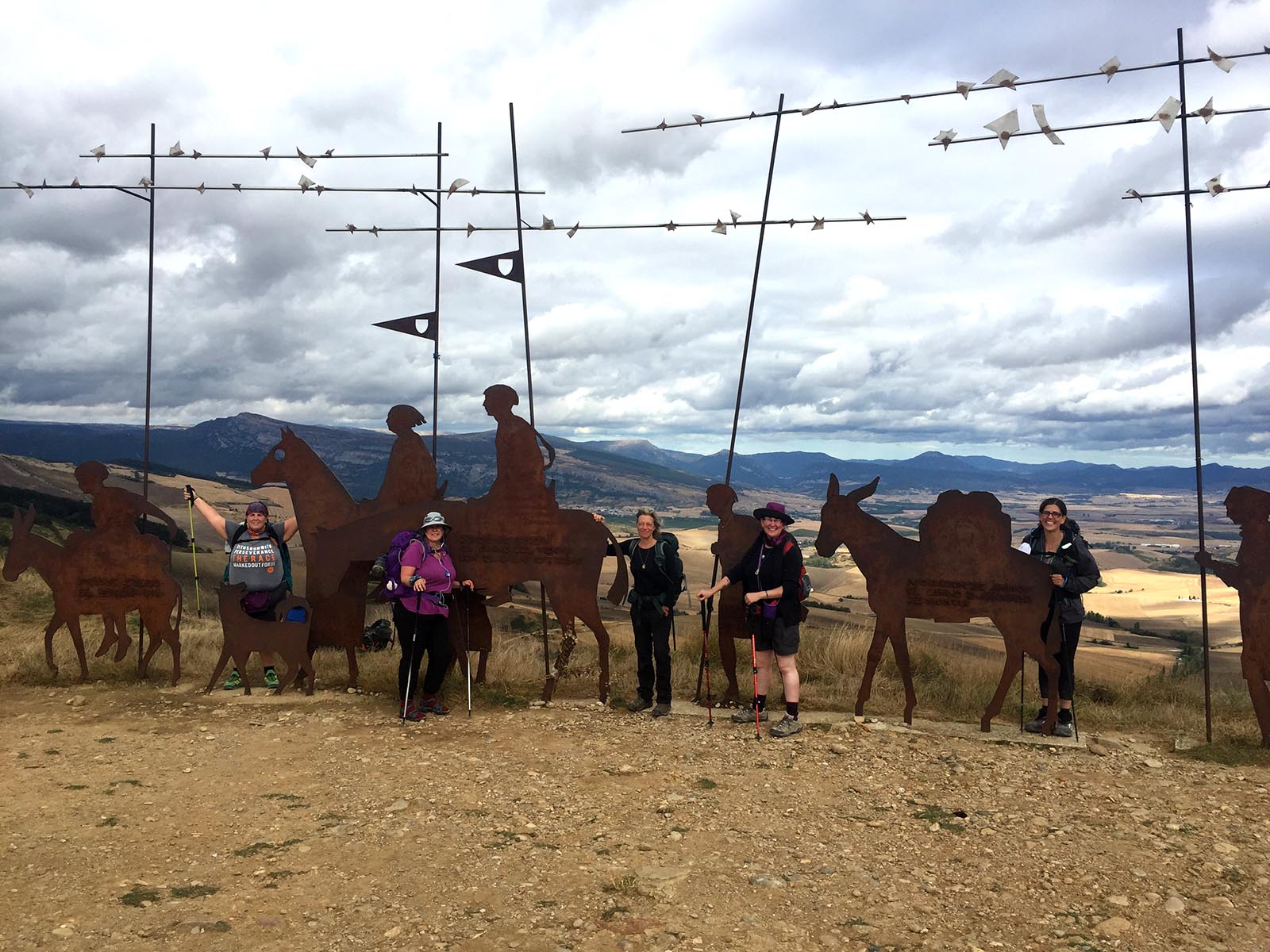
Did you hike the Camino de Santiago alone? Is it easy to meet people?
I started off on the French route with a close friend, but after a few days of trying to match each other’s pace, we decided to separate and meet at the end, which was really amazing. The Portuguese I walked on my own. It is very easy to meet people on the Camino and make deep bonds.
What is the cost of food and accommodation for the Camino de Santiago?
The cost of doing the Camino will depend on what your needs are. You can easily do it for anywhere between $30-$50 a day depending on your comfort needs. The Camino municipals are as low as six or seven dollars a night whereas albergues can run as much as $25 or $30 a night. [Municipals are large government-run accommodation with kitchens, while albergues are hostels set up for people walking the Camino usually with a shared evening meal.]
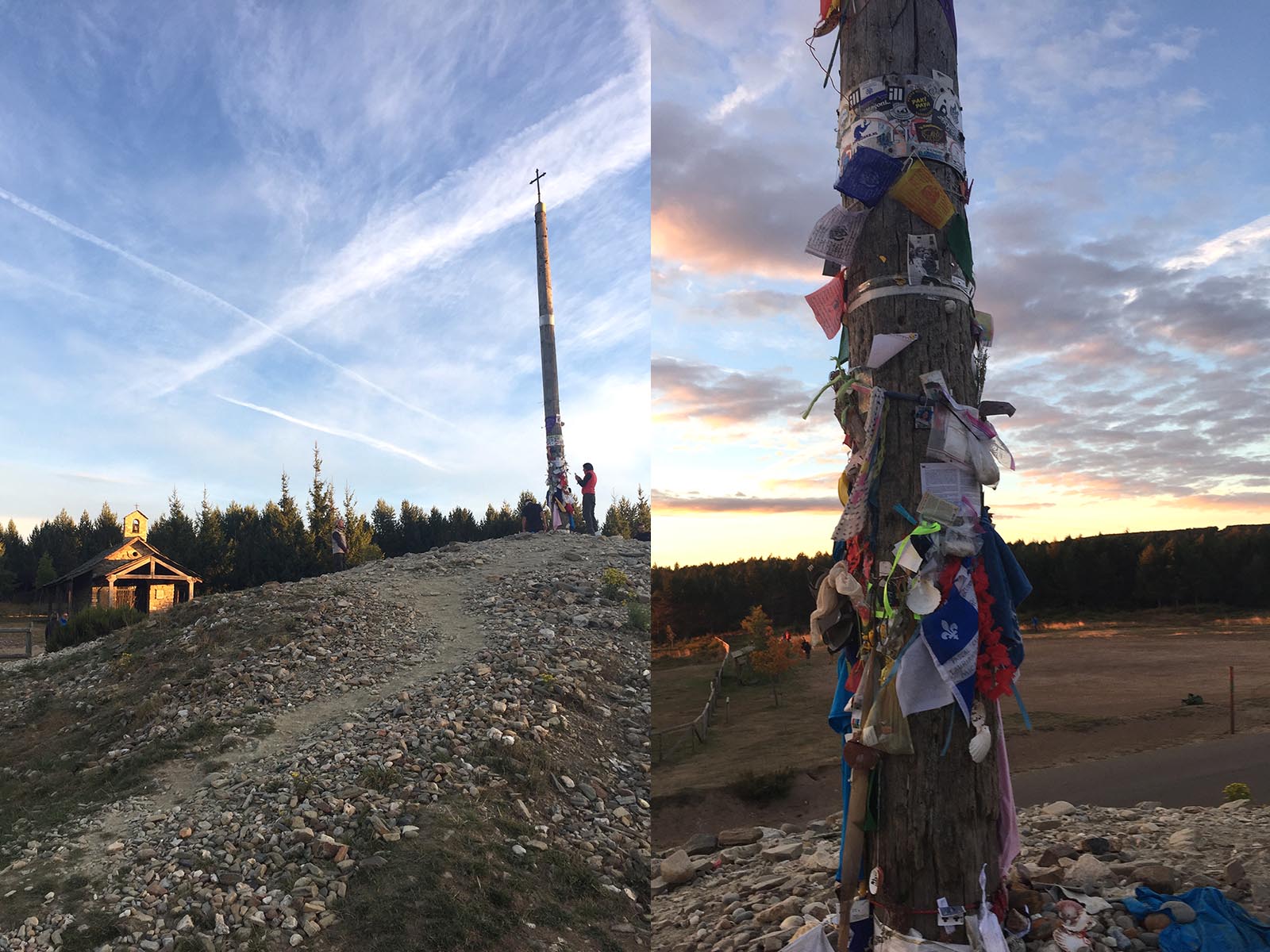
How much did your day pack weigh?
Your pack should weigh 10% of your ideal body weight, not including food and water for the day. I used an Osprey Stratus – it weighs three pounds and 4.5 ounces. It’s heavy for a pack, but I had a difficult time finding something that would fit both my torso length (which is long) and my waist. It’s a really great pack.
Can you give us a rundown on what to pack for the Camino de Santiago?
In many ways, the Camino was a metaphor for life. Learn not to carry what you don’t need. Be mindful of what you absolutely need and what you can leave behind. It will make your Camino much more enjoyable.
For myself, I brought four t-shirts very lightweight, four pairs of underwear, three pairs of very lightweight socks (Darn Tough), three pairs of heavier socks (Smartwool)—all wool. One long-sleeve Patagonia Capilene shirt, one pair of Patagonia water-resistant pants, one pair of lightweight cotton pants, lightweight hat, sunglasses, sunscreen, and toiletries. (Check out the detailed packing list at the end of the post!)
Some great hacks: Use a shampoo bar—it’s lighter than bringing regular shampoo. Remember, you can buy replacement for things such as toothpaste along the way, so bring a very small tube of toothpaste. You can buy a small tin of zinc sunscreen for your face. For your water bottle, use plastic.
If you were doing the French route, there will be days when you want to wear a light pair of socks with a heavier pair of socks over them to protect your feet. You will also want to change your socks out midday. You can buy gloves along the way if it’s cold.
How much water were you carrying every day on the Camino?
Typically, I carried about a liter to a liter and a half of water depending on how much water is available [on the route]. You can check the night before to see what water is available along the way. Finding water along the Portuguese route was more difficult and I ended up carrying closer to two liters every day
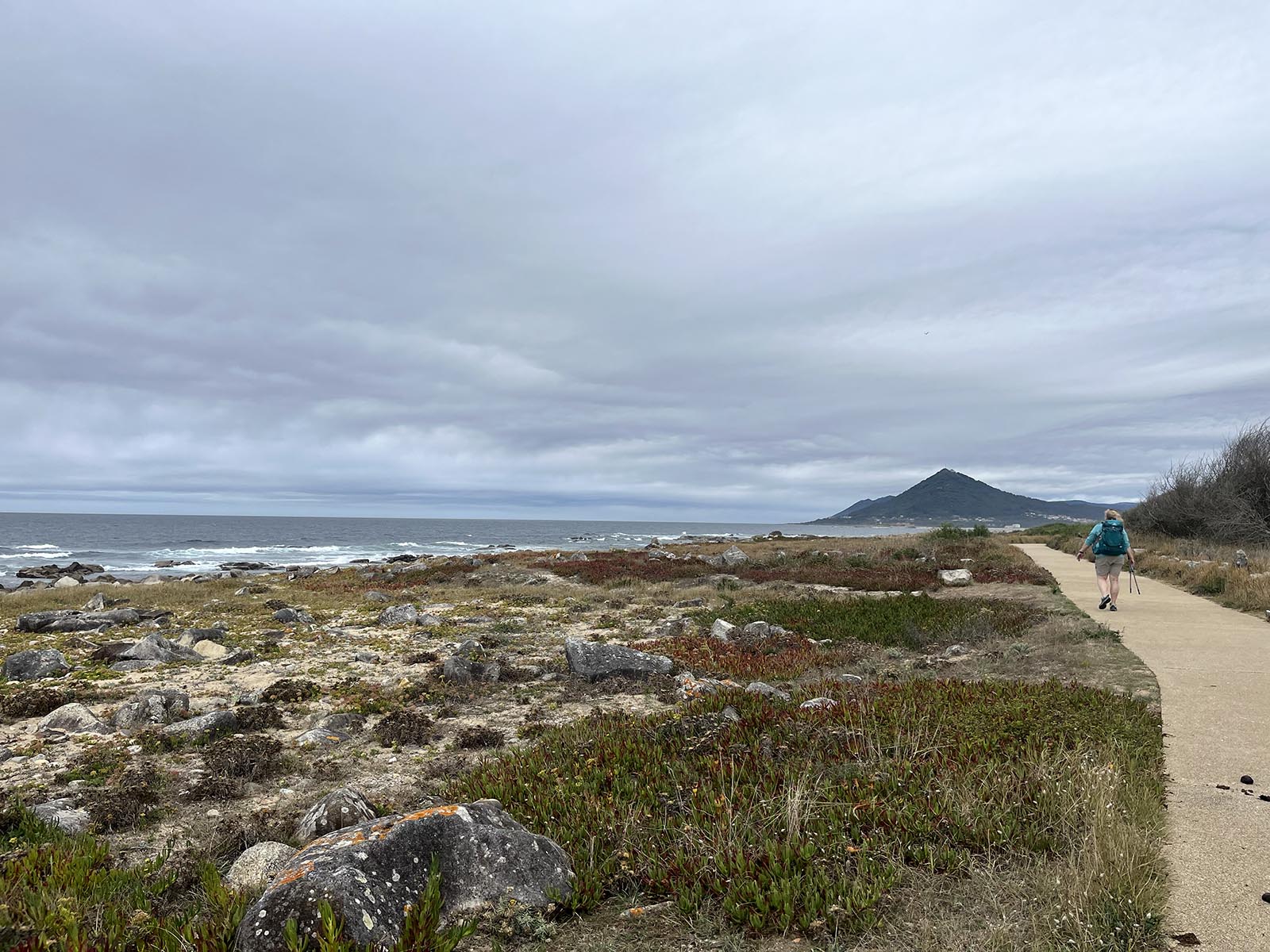
What advice would you have for someone hiking the Camino?
Remember that the Camino is a personal journey, and everyone’s Camino will be different. Give yourself grace. Some people may find themselves walking five miles a day while others may find themselves walking 20 miles a day. Again, this is your journey!
What’s your next adventure?
Either going up to Hudson Bay, Canada to see the polar bears and Northern Lights or heading to Nepal for some trekking and cultural experiences.
Camino de Santiago Packing List
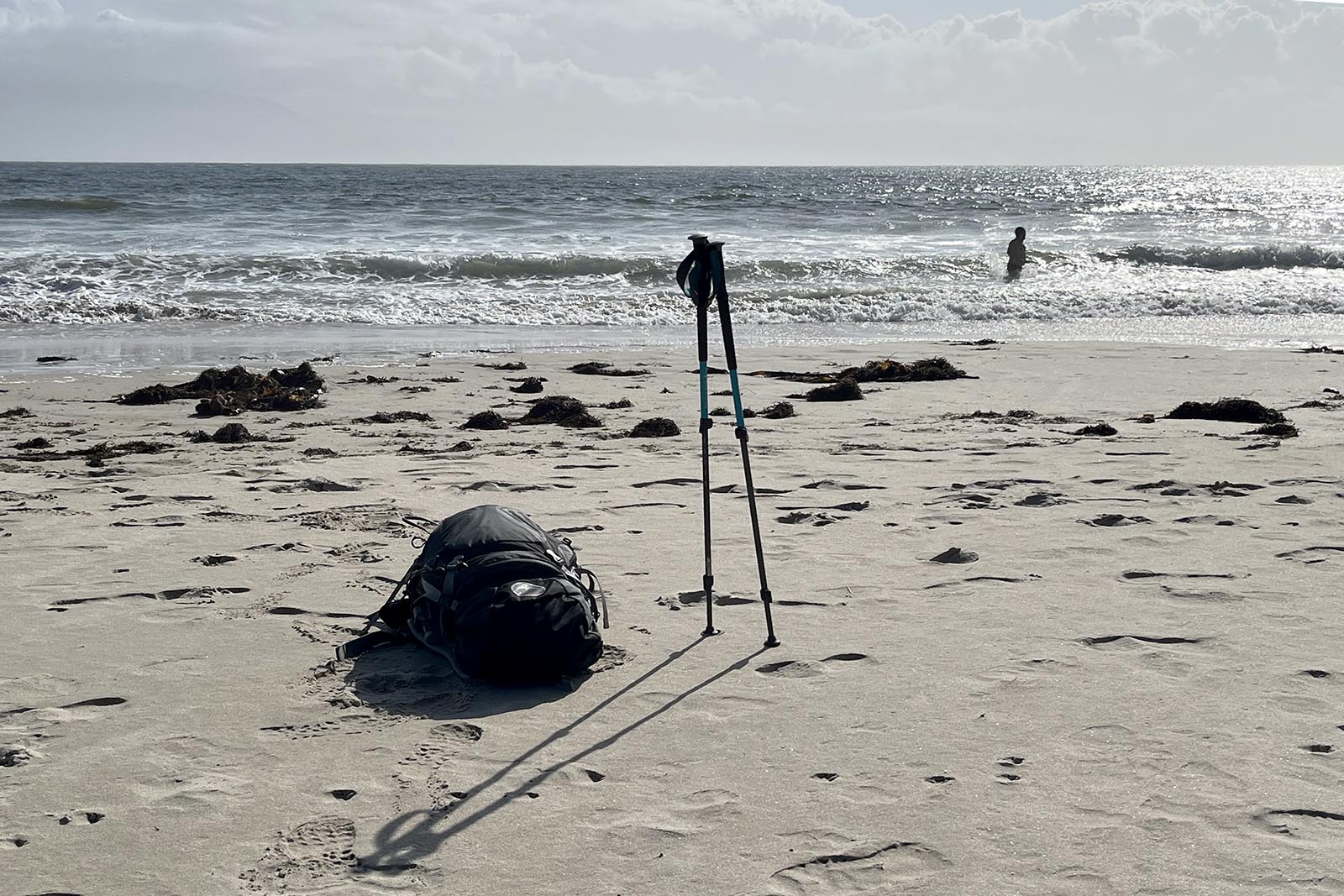
Socks:
7 pairs (All should be wool!)
3 pairs ultralight weight Smartwool
3 pairs of Darn Tough heavier-weight socks.
One pair of ankle socks to wear at night ultra lightweight. Light Hiker Quarter by Darn Tough.
Underwear: 3 pairs
Tops: 4 lightweight t-shirts, One long-sleeve Patagonia Capilene base layer
Bottoms:
One pair of Patagonia water-repellent pants
One pair of lightweight Mountain Hardware pants.
One pair of shorts.
Chris Notes: I hiked in Patagonia [pants] the first time and Kuhl the second time. I have a pair of Mountain Hardwear for a backup but am also looking for something lighter!!!
Toiletries: Toothbrush, small toothpaste, shampoo bar (cut in half), Argon lotion bar (cut in half) for my face, lightweight towel (14X20 inches). [Chris cuts her shampoo and lotion bar in half and stores it in a plastic pill bag. She recommends Dr. Bronner’s.]
Water: Two plastic half-liter bottles. [Please note that water is more frequent on the French route than Portuguese.]
Shoes: Waterproof hiking boots (high ankle) for the French route. For the Portuguese route, I used trail runners. I did not bring a spare pair of shoes, but many people do.
Outerwear: Ultra lightweight raincoat, Patagonia puffer, lightweight hat, sunglasses.
Electronics: iPhone & charger
Hiking Poles: Get a pair of lightweight ones that can fold down.
Sleeping bag: Silk sleep sack. (Silk is both lightweight and can add warmth.)
Dry bags: Three ultra-lightweight dry bags: One to keep my clean clothes in, one to put my dirty clothes in and one very small one for my passport and other important objects that need to stay dry. Rain poncho for my pack.
The post What to Pack for the Camino de Santiago: Advice from a Woman Who’s Walked It Twice appeared first on Travel Like Anna.
